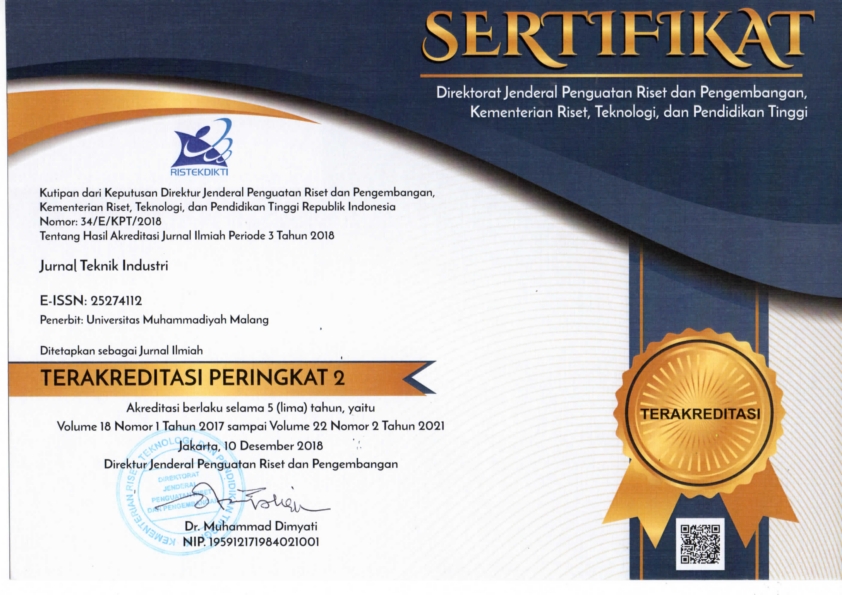Optimasi Rongga Terhadap Variasi Derajat Kevakuman Sebagai Isolator
DOI:
https://doi.org/10.22219/JTIUMM.Vol11.No1.63-67Keywords:
vacuum pressure, cavity, heat transfer, aspects of cavity ratioAbstract
In the world of industry, insulation materials are often utilized to maintain the temperature, either low or high. However, since the insulation materials often need to be thick, thus, costly, they are frequently deemed impractical. Therefore, in the attempt to replace the insulation materials, a cavity with low vacuum pressure is opted for. Yet, to attain a total (100%) airfree cavity is not an easy task. Such, the cavity usually still bears some amount of air pressure which results in natural heat convection through the two surfaces making up the cavity. The transfer coefficient of natural heat convection (h) is influenced by some factors, such as, the temperature difference, geometry of the cavity, cavity orientation, and characteristics of the fluid, for instance, its pressure, temperature, conductivity, specific gravity (density), and viscosity. The purpose of the study is to find answers to the following question: “How do vacuum pressure variation and cavity ratio affect the rate of natural heat convection through the a cavity?” Pertinent to the question, the study was aimed to find the appropriate value of the vacuum pressurewhich can function well as an insulator. This study is significant in the attempt to lower down the rate of heat transfer taking place in a system vis-à-vis the surrounding media. The study found out that the degree of emptiness of -60 cm Hg and =5.96, results in a lower rate of heat transfer compared with -20 cm Hg and -40 cm Hg. This means that the vacuum pressure of -60cm Hg bears a bigger thermal resistance than the -20 cm Hg and -40 cm Hg do.
Downloads
Download data is not yet available.
Downloads
Published
02/18/2012
How to Cite
Mulyono, M. (2012). Optimasi Rongga Terhadap Variasi Derajat Kevakuman Sebagai Isolator. Jurnal Teknik Industri, 11(1), 63–67. https://doi.org/10.22219/JTIUMM.Vol11.No1.63-67
Issue
Section
Article











